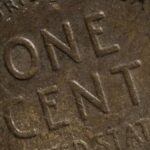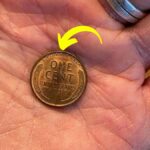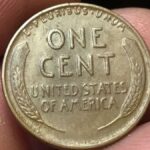Coin collectors and history enthusiasts are always on the lookout for rare and valuable coins. One such legendary coin is the Lincoln Wheat Penny, which has been valued at an astonishing $159 million. What makes this penny so special? Could it still be hiding in circulation? Let’s explore the fascinating story of this rare coin.
The History of the Lincoln Wheat Penny
The Lincoln Wheat Penny was first introduced in 1909 by the United States Mint to honor the 100th birthday of President Abraham Lincoln. It replaced the Indian Head penny and became the first U.S. coin to feature a real historical figure. Designed by Victor David Brenner, the coin displayed Lincoln’s portrait on the obverse (front side) and two wheat stalks on the reverse (back side), symbolizing America’s agricultural strength.
The penny was minted from 1909 to 1958, after which it was replaced by the Lincoln Memorial penny.
What Makes This Penny Worth $159 Million?
Not all Lincoln Wheat Pennies are valuable, but a few rare variations have become legendary among collectors. The $159 million Lincoln Wheat Penny is believed to be a one-of-a-kind coin, making it incredibly valuable.
The key factors that contribute to its value include:
- Rare Minting Error – This particular penny is rumored to have been struck on a bronze planchet instead of the usual copper-zinc alloy.
- Extremely Limited Availability – Only one or very few of these coins exist, making it a priceless collectible.
- Perfect Condition – Coins that are uncirculated or in mint condition are far more valuable than those that have been in use.
- Unique Historical Significance – Some believe this penny may have been part of a secret minting experiment or an error coin that was never meant to leave the U.S. Mint.
Is This Penny Still in Circulation?
It may seem unbelievable, but many rare coins still exist in circulation because people often overlook them. Since the Lincoln Wheat Penny looks like a regular penny, someone might unknowingly spend it as just another one-cent coin.
Coin experts suggest checking your spare change carefully, especially older pennies from 1909 to 1958. Although the chance of finding this specific $159 million penny is extremely rare, other valuable Wheat Pennies could still be out there.
Other Valuable Lincoln Wheat Pennies to Look For
Even if you don’t find the $159 million Wheat Penny, there are still other valuable versions you might come across:
- 1909-S VDB Lincoln Wheat Penny – One of the most famous pennies, worth up to $100,000.
- 1943 Copper Lincoln Penny – An extremely rare error coin that was mistakenly struck in copper instead of steel, valued at over $1 million.
- 1955 Double Die Lincoln Penny – A coin with a noticeable double print effect, worth thousands of dollars.
How to Check If You Have a Rare Penny
If you come across an old Lincoln Wheat Penny, here’s what you should do:
- Check the Date – Pennies from 1909, 1914, 1943, and 1955 are among the rarest.
- Look for Mint Marks – The small letters S (San Francisco), D (Denver), or no mint mark (Philadelphia) can affect the value.
- Inspect for Errors – Any unusual features like double stamping, missing details, or different metal compositions could indicate a rare coin.
- Get a Professional Opinion – If you think you have a valuable penny, take it to a professional coin dealer or numismatist for verification.
Final Thoughts
The Lincoln Wheat Penny valued at $159 million remains one of the greatest mysteries in coin collecting. Whether or not it is still in circulation, its story continues to inspire collectors and history lovers alike. While finding this legendary penny may seem like a dream, searching through your spare change could still lead to a hidden treasure. So, next time you receive a penny, take a closer look—you never know what valuable history might be in your hands!
Disclaimer: The prices mentioned for rare coins, including the Lincoln Wheat Penny, are not guaranteed and may not be entirely accurate due to market fluctuations and varying appraisals.
Disclaimer: This article is written for informational purposes only. We do not guarantee its completeness or accuracy, please confirm with official sources.




